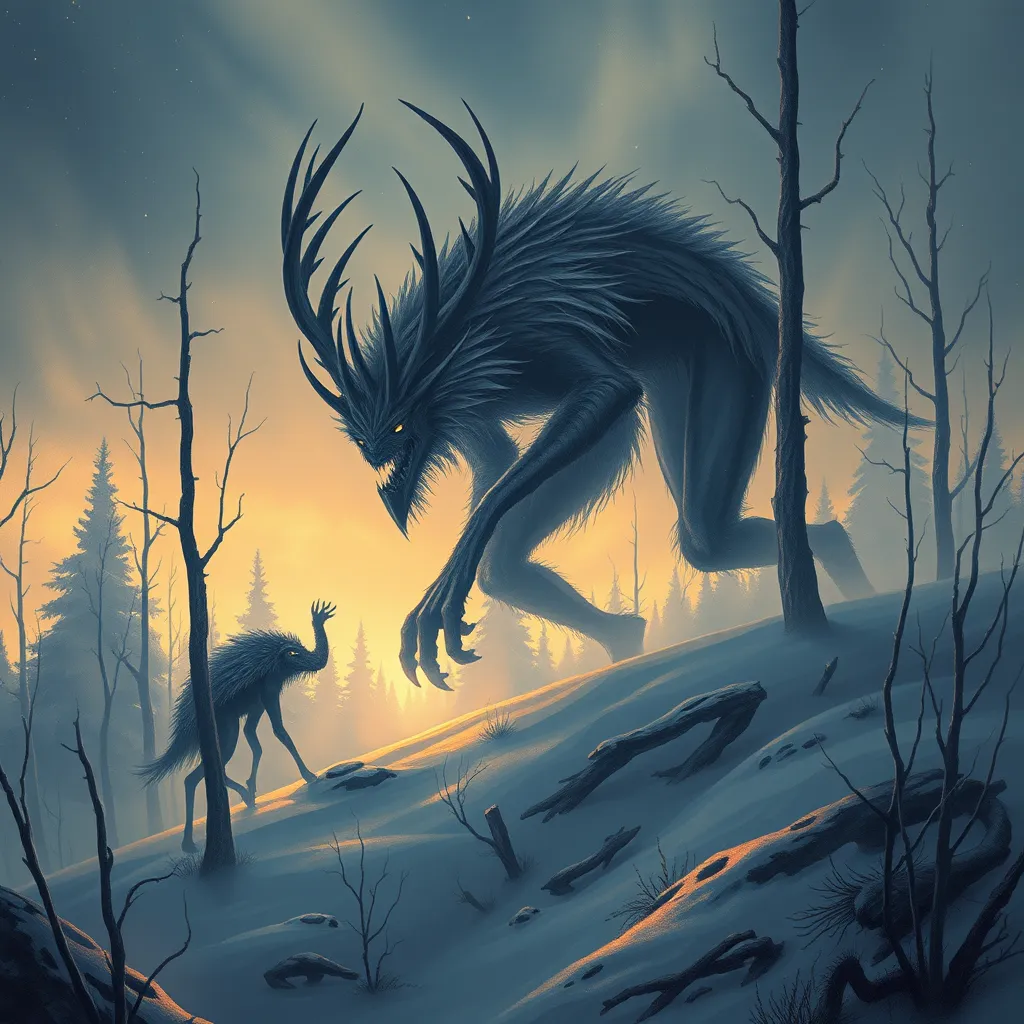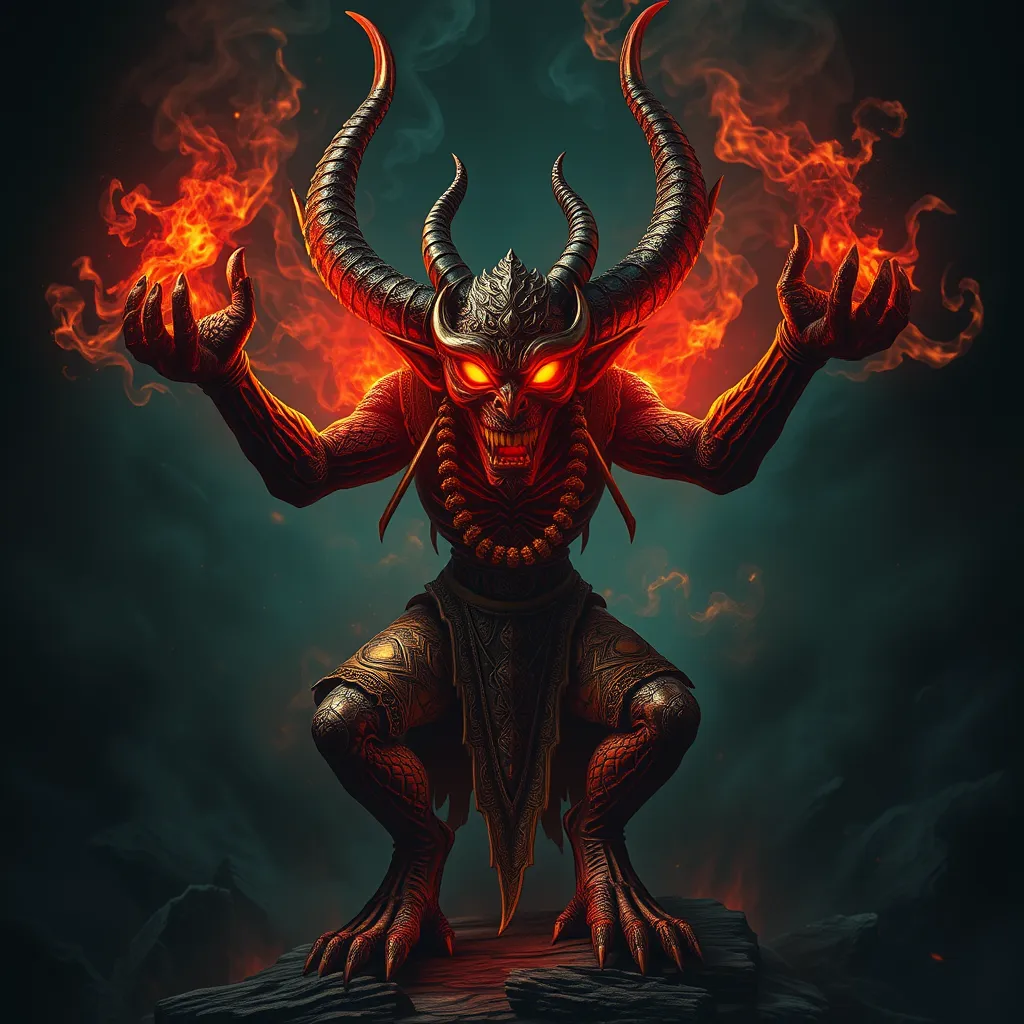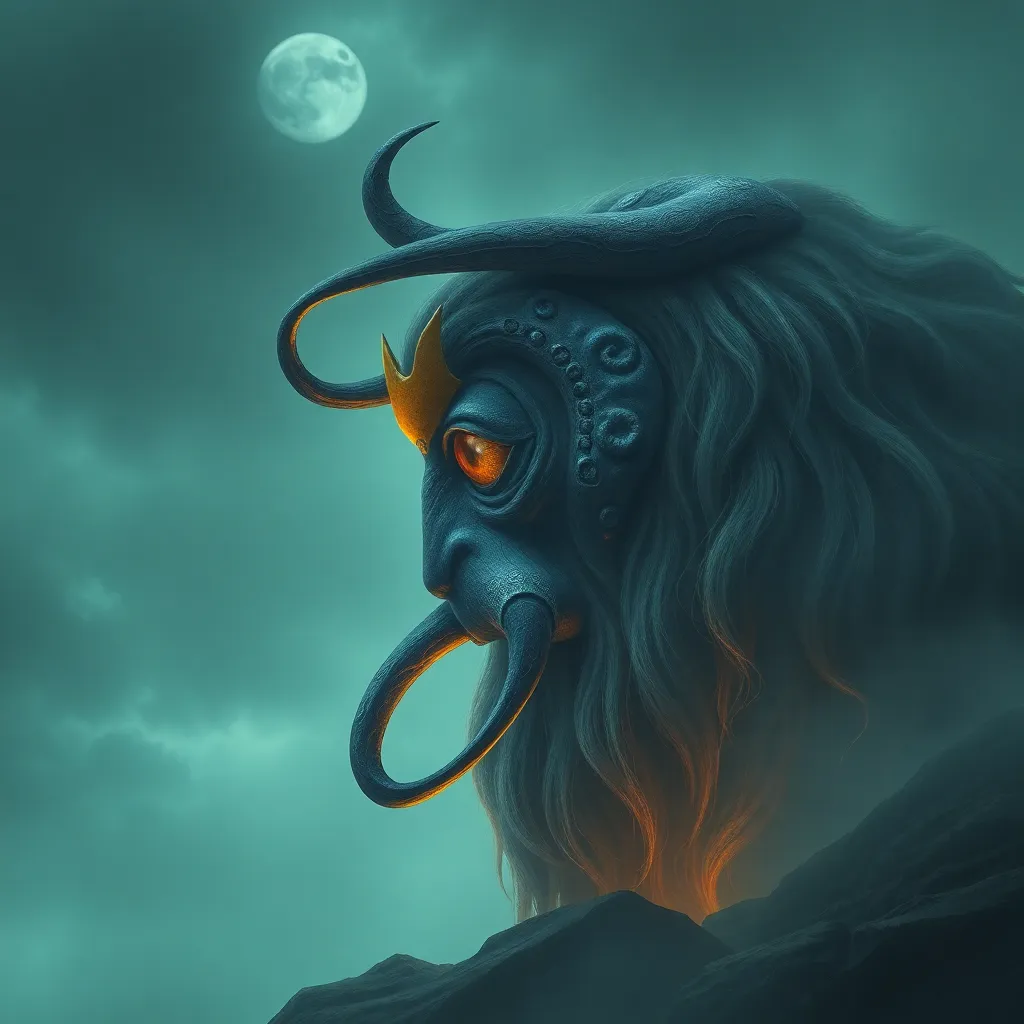Wendigo: The Mythology of Winter Famine and the Dangers of Greed
I. Introduction
The Wendigo is a creature rooted in the folklore of Indigenous peoples in North America, particularly among the Algonquin tribes. Often depicted as a malevolent spirit or monster, the Wendigo embodies the fears and challenges faced during harsh winters. This article explores the themes of winter famine and greed as they relate to the Wendigo myth, highlighting its cultural significance and the moral lessons it imparts.
Understanding these themes is crucial as they reflect not only historical contexts but also contemporary issues. This article will delve into the origins of the Wendigo myth, its symbolism, psychological interpretations, modern adaptations, and the cautionary tales it presents.
II. Origins of the Wendigo Myth
The Wendigo myth has deep historical roots among Indigenous peoples, particularly in the regions of Canada and the northern United States. Traditionally, the Wendigo was seen as a spirit of winter that could possess human beings, transforming them into monstrous beings driven by insatiable hunger.
- Historical context: The Wendigo legend emerged during times of extreme hunger and starvation, particularly during brutal winter months.
- Cultural significance: For many Indigenous cultures, the Wendigo serves as a cautionary figure, warning against the dangers of selfishness and greed.
As the myth evolved, the Wendigo transitioned from a mere spirit of hunger to a more complex figure embodying human greed and moral decay. This evolution reflects changing societal values and interpretations over time.
III. The Wendigo as a Symbol of Winter Famine
In many tales, the Wendigo is directly connected to the harshness of winter and the struggles for survival that accompany it. The myth vividly represents the dire consequences of hunger and desperation.
- Connection to harsh winter conditions: The Wendigo often appears when resources are scarce, symbolizing the desperation that arises when people are pushed to their limits.
- Representations of hunger: The insatiable hunger of the Wendigo reflects the physical and psychological toll of starvation, making it a powerful symbol of the human condition.
- Transformation from human to monster: The legend often tells of individuals who succumb to the Wendigo’s lure, transforming into monstrous beings themselves, highlighting the thin line between humanity and savagery.
IV. The Dangers of Greed in Wendigo Lore
Greed is fundamentally intertwined with the Wendigo myth. The emergence of the Wendigo is often portrayed as a direct consequence of human greed and the moral failings that accompany it.
- Greed leading to the Wendigo’s emergence: Many stories illustrate how individuals, in their quest for more, become victims of their own desires, ultimately leading to their transformation into a Wendigo.
- Stories of greed: Tales frequently depict characters who, in their pursuit of wealth or sustenance, abandon their morals and humanity, becoming embodiments of the Wendigo.
- Moral lessons: These stories serve as cautionary tales, emphasizing the importance of moderation and the consequences of unchecked desire.
V. Psychological Interpretations of the Wendigo Phenomenon
The Wendigo can also be interpreted through a psychological lens, representing deeper fears and anxieties prevalent in the human experience.
- Manifestation of fears: The Wendigo symbolizes the innate fears of starvation and the loss of control that accompany isolation.
- Isolation and starvation: The psychological implications of facing extreme conditions can lead to madness, as depicted in various Wendigo stories.
- Greed as a destructive force: The tale of the Wendigo warns against the destructive nature of greed, not only on an individual level but also within communities.
VI. Modern Adaptations and Representations of the Wendigo
In contemporary culture, the Wendigo has found new life in literature, film, and art, reflecting changing interpretations and societal contexts.
- Contemporary literature: Authors have reimagined the Wendigo in various narratives, often exploring themes of survival and moral decay.
- Film and television: The Wendigo appears in horror films and series, embodying the primal fears associated with loneliness and desperation.
- Artistic representations: Artists continue to depict the Wendigo, using its image to comment on societal issues such as greed and environmental destruction.
The shifting portrayal of the Wendigo demonstrates its relevance in addressing contemporary societal challenges, particularly those related to survival and ethical dilemmas.
VII. Cautionary Tales: Lessons from Wendigo Mythology
The Wendigo myth serves as a powerful cautionary tale, imparting valuable lessons about balance and community.
- Importance of balance: The myth emphasizes the need for moderation in desires and actions, warning against the dangers of excess.
- Community cooperation: The tales often highlight the strength found in community and cooperation, suggesting that unity can combat the forces of greed.
- Reflection on modern issues: As modern society grapples with issues of famine, inequality, and greed, the lessons from Wendigo mythology remain relevant.
VIII. Conclusion
The Wendigo is more than just a mythological creature; it serves as a vital symbol of human fears, societal issues, and moral lessons. Its significance in mythology and culture transcends time, reminding us of the dangers of greed and the importance of community.
As we reflect on the Wendigo myth, we are called to action—encouraged to be mindful of our desires and the consequences they may have on ourselves and our communities. The Wendigo serves as a poignant reminder that in the face of hardship, we must strive for balance, cooperation, and compassion.



